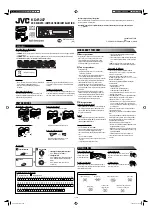
5. Quality Control
46
5.3.2
Microplate Test
If the optical densities of the wells in the microplate are not consistent, the results
obtained with this type of microplate will be influenced.
This inconsistency can be checked by reading an empty microplate.
The OD values obtained from the measurement of the empty microplate should
be in a narrow range. For example: ± 0.010 OD.
If the OD values are not within this range this type of microplate should not be
used.
By using dual wavelength measurements, the influence of the difference in OD
values of the microplate is removed or reduced to a level that is within acceptable
limits.
5.3.3
Instrument Precision with Liquid Samples
This procedure can be used to check the reproducibility of the measurements.
The use of a microplate with flat bottom is recommended.
Fill a new microplate with a freshly prepared Orange G solution; use different
dilutions of the solution in each well so that a range of optical densities is
obtained. Make sure that the wells contain at least 200 µl. The dilution series
should be within the range of 0.1 to 3.0 OD. To reach about 3 OD it is
recommended to use 125 mg.l
-1
Orange G (Sigma, Cat. No. O7252).
Define a test run using the 492 nm filter and then measure the microplate at least
three times.
For each well calculate the:
•
average OD value
•
standard deviation
Example
Readings 0.000 to 2.000 OD
The standard deviation of each well should be within (0.5 % + 0.005 OD).
Calculation of maximum allowed deviation using 1.000 OD as average OD value:
1.000 * 0.5 % + 0.005 = 0.010 OD
Readings 2.001 to 3.000 OD
The standard deviation of each well should be within (1.0 % + 0.005 OD).
Calculation of maximum allowed deviation using 2.400 OD as average OD value:
2.400 * 1.0 % + 0.005 = 0.029 OD
Readings above 3.000 OD
Readings above 3.000 OD are only used as an indication and the precision
cannot be guaranteed.
















































